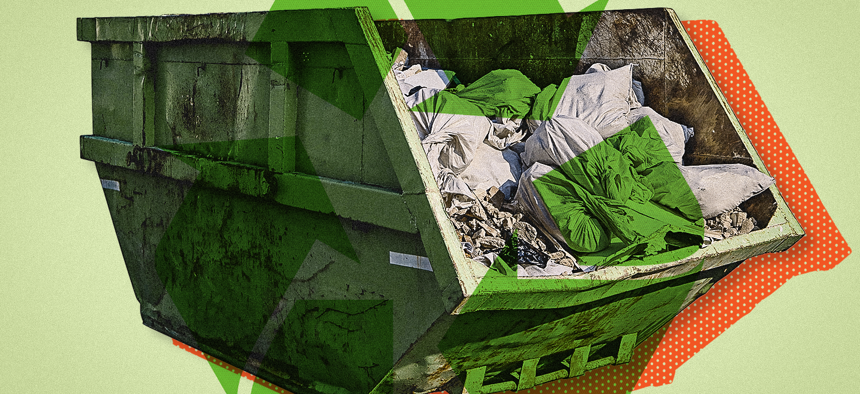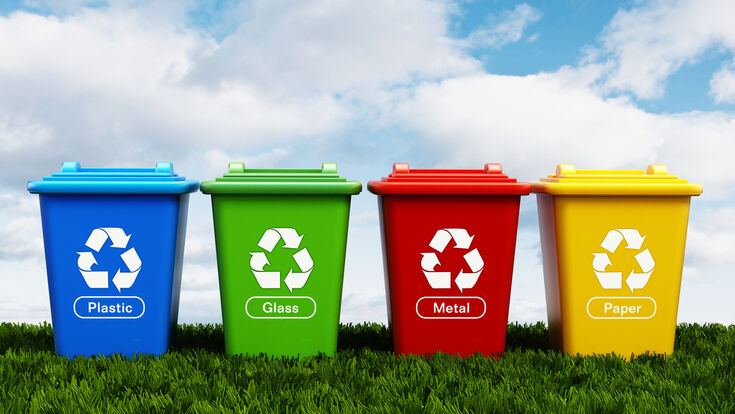Recycling Lives Services: Transforming Waste right into Valuable Resources
Wiki Article
Exploring Various Kinds of Waste in Modern Waste Management Solution
The modern landscape of waste management involves browsing a complex range of waste types, each needing specialized handling and disposal techniques to mitigate environmental effects. Local strong waste, hazardous waste, electronic waste, and organic waste each present unique difficulties and chances for source recuperation. Cutting-edge remedies such as clever waste containers and waste-to-energy technologies are emerging as vital devices in improving effectiveness and sustainability. Understanding these waste kinds is crucial for cultivating public recognition and motivating active participation in sustainable techniques. What methods can properly resolve these diverse kinds of waste while advertising a round economic climate?Community Solid Waste
Metropolitan strong waste, commonly referred to as household garbage or trash, encompasses a selection of thrown out products generated by household, industrial, and institutional resources within a municipality. This waste stream typically consists of items such as product packaging, food scraps, yard trimmings, paper, plastics, fabrics, and disposed of household products. The management of municipal strong waste is an essential element of city planning and public wellness, demanding effective collection, transport, and disposal systems.Efficient waste administration systems are made to lessen ecological effect while making the most of resource healing. Composting organic waste, such as food scraps and backyard trimmings, not just lowers landfill usage yet likewise creates useful dirt changes.
Districts must also address the logistical and financial difficulties connected with waste monitoring. Implementing pay-as-you-throw systems, improving public recognition, and purchasing technology can considerably improve waste diversion rates. By integrating these methods, towns can foster sustainable areas, reduce greenhouse gas emissions, and conserve natural deposits.
Hazardous Waste

Reliable unsafe waste management involves numerous essential actions: identification, treatment, disposal, and segregation. Segregation ensures that hazardous products are saved separately from non-hazardous waste to prevent cross-contamination.
Governing structures, such as the Resource Conservation and Recovery Act (RCRA) in the United States, give standards and requirements for dangerous waste management. Adherence to these regulations, paired with innovations in waste treatment technologies, is essential in reducing the risks connected with harmful waste.
Electronic Waste
Digital waste, generally referred to as e-waste, represents a swiftly growing challenge in waste administration systems around the world. This sort of waste encompasses disposed of electronic tools and equipment such as smart devices, computers, tvs, and other digital home appliances. The rapid rate of technical development, paired with reducing item life expectancies and consumer need for the newest tools, has greatly boosted the volume of e-waste produced each year.E-waste is especially bothersome because of its complex structure, often consisting of hazardous compounds like mercury, cadmium, and lead, which present significant environmental and health and wellness risks otherwise correctly taken care of. Alternatively, e-waste likewise consists of beneficial materials such as silver, copper, and gold, which can be recuperated and recycled. The double nature of e-waste-- both important and harmful-- demands specialized handling, recycling, and disposal procedures.
Reliable e-waste administration involves rigid governing frameworks, robust collection systems, and progressed recycling modern technologies. Public understanding and participation are crucial, as improper disposal techniques, such as illegal dumping and informal recycling, intensify environmental contamination and health and wellness dangers. As a result, boosting e-waste monitoring practices is essential for minimizing environmental influence and recouping important resources in a progressively electronic globe.

Organic Waste
Organic waste, making up kitchen scraps, backyard trimmings, and agricultural residues, represents a substantial portion of the global waste stream. go to my blog This type of waste is eco-friendly, indicating it can be broken down by bacteria right into less complex organic substances. Despite its capacity for natural disintegration, incorrect monitoring of organic waste can result in damaging environmental impacts, including the exhaust of greenhouse gases such as methane, which contribute to climate adjustment.Effective monitoring of organic waste is critical for reducing these ecological impacts (recycling lives services). Composting is a moved here commonly adopted technique, changing natural waste right into nutrient-rich compost that can boost dirt health and agricultural efficiency. Additionally, anaerobic food digestion is an emerging innovation that converts organic waste into biogas, a renewable resource source, and digestate, which can be used as fertilizer
Municipalities and waste monitoring entities should carry out durable natural waste collection and therapy programs to make best use of the benefits of these processes. Public education and learning campaigns can likewise play an essential function in motivating families and organizations to different natural waste from other kinds of waste. By prioritizing the administration of organic waste, societies can decrease garbage dump usage, reduced greenhouse gas discharges, and produce useful by-products for farming usage.

Innovative Waste Management
In the realm of waste management, innovative approaches are transforming exactly how societies handle their refuse, aiming for sustainability and effectiveness. One prominent technology is the execution of clever waste containers furnished with sensing units that monitor fill levels and maximize collection routes.
Another noteworthy advancement is the adoption of waste-to-energy (WtE) innovations. By transforming non-recyclable waste right into functional energy via processes such as incineration and anaerobic digestion, WtE reduces land fill burden and supplies a renewable resource resource. Moreover, developments in chemical reusing enable the malfunction of complicated plastics into their initial monomers, making it possible for the development of brand-new, high-grade plastic products.
Furthermore, the round economy model is acquiring traction, stressing the layout of items and systems that prioritize reusability and source effectiveness. This alternative strategy encourages markets to decrease waste generation from the start. With these innovative approaches, modern waste monitoring systems are not just addressing the instant obstacles of garbage disposal but likewise leading the way for an extra lasting future.
Conclusion
An extensive understanding of municipal strong waste, contaminated materials, digital waste, and natural waste, paired with the implementation of innovative waste monitoring solutions, is critical for reducing ecological influences. Incorporating innovations such as wise waste containers and waste-to-energy systems can boost efficiency and sustainability. Effective why not look here waste monitoring techniques not just foster source recovery yet also promote public understanding and engagement, inevitably contributing to the advancement of a round economic situation.The modern landscape of waste administration includes navigating a complex selection of waste types, each requiring specialized handling and disposal approaches to mitigate ecological influences. Local solid waste, hazardous waste, digital waste, and natural waste each existing distinctive obstacles and possibilities for source recovery.Electronic waste, commonly referred to as e-waste, stands for a quickly expanding obstacle in waste monitoring systems around the world. Via these cutting-edge strategies, modern-day waste monitoring systems are not only dealing with the instant obstacles of waste disposal but likewise leading the means for a much more lasting future.
A comprehensive understanding of metropolitan strong waste, dangerous waste, electronic waste, and natural waste, paired with the execution of cutting-edge waste management remedies, is crucial for reducing environmental effects. (recycling lives services)
Report this wiki page